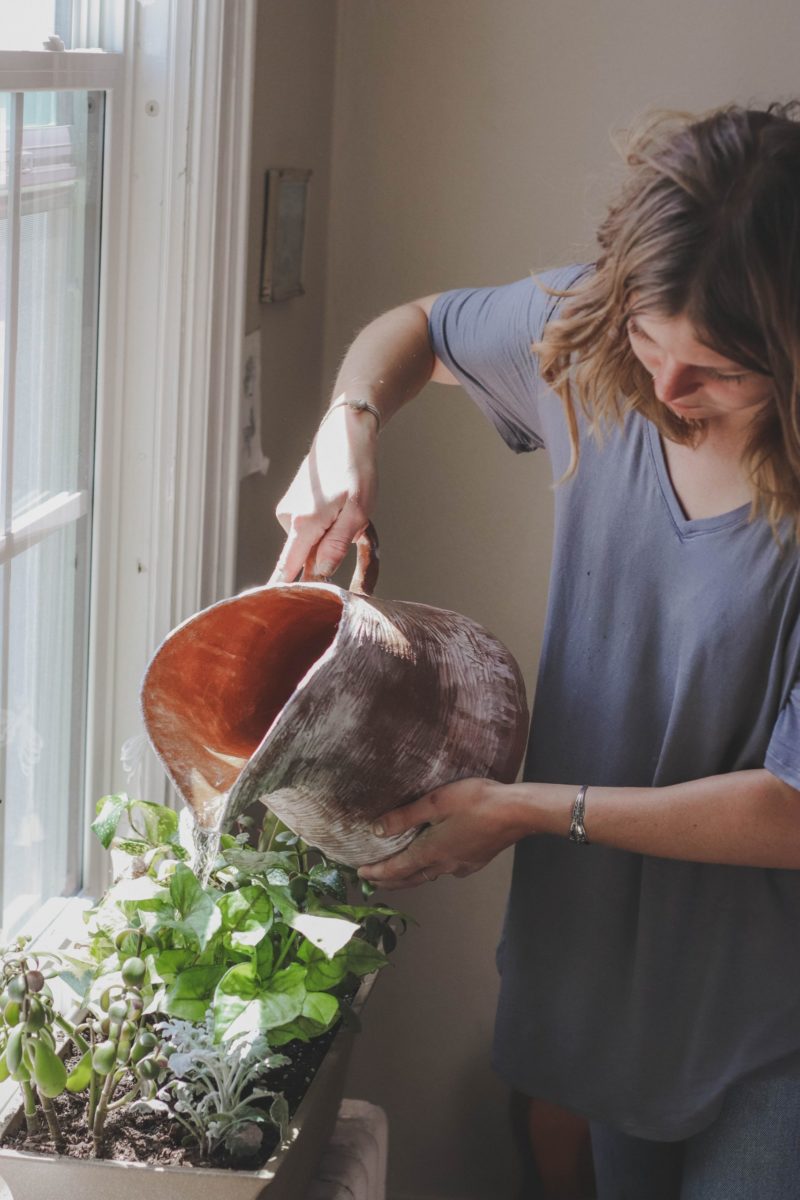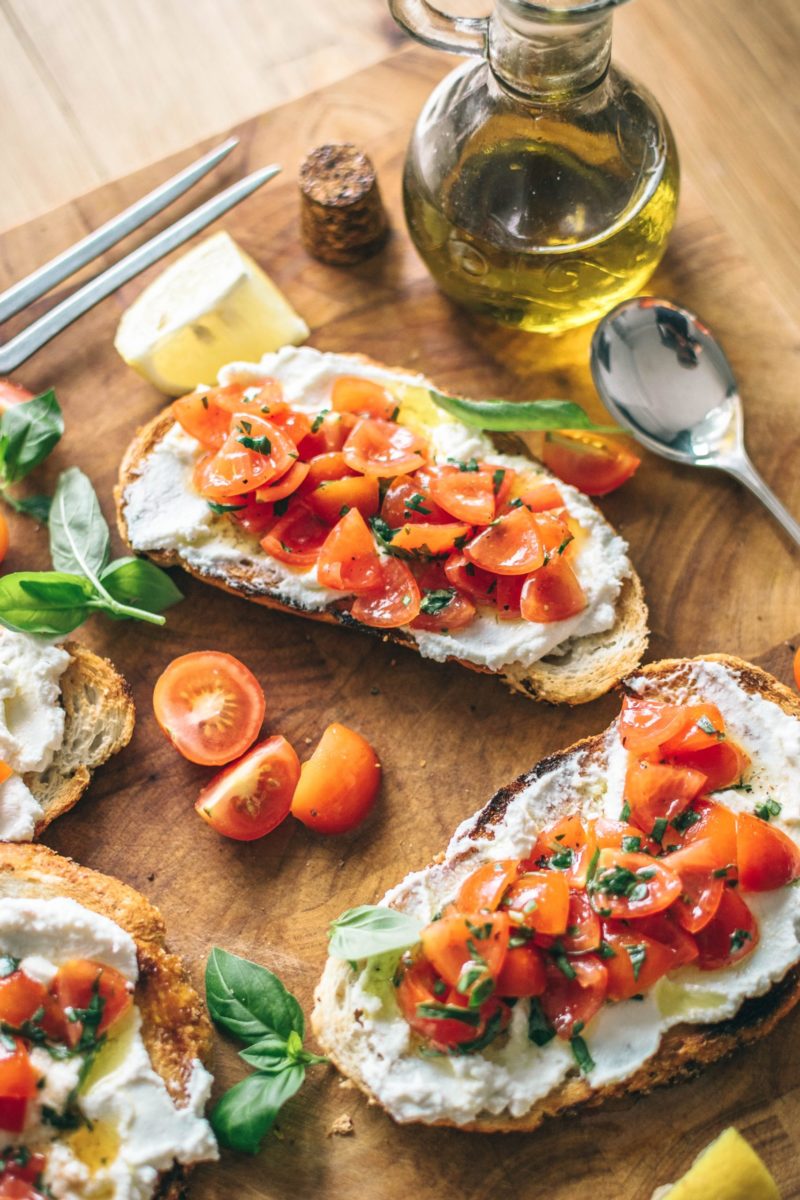December 2020 Brighten Up Your Winter With Herbs!
By Taylor Lane
Bring the garden indoors this winter by growing your own herbs! These flavorful, nutrient-packed plants will bring lively color into your home and spice up your cooking routine. Almost any herbs are super easy to grow indoors and some will even thrive without a lot of sun. Check out this guide to find out how to grow your own herbs, how to cook with them and learn about their cost and nutritional benefits!
Tips and Tricks for Growing Herbs Indoors

The first important factor to think about when choosing which herbs to grow inside is the type of light they will need to flourish. For example, herbs that prefer full sun will grow best in a south-facing window where bright light comes in for most of the day. Basil, oregano, thyme and rosemary are just a few examples of herbs that thrive best in the sun.
In contrast, herbs that thrive in partial shade will do best in an east or west-facing window where light shines in for about half of the day. Mint, parsley, chives and lemon balm are examples of herbs that do well in this environment.
Some of you may be thinking…
What if I don’t have the proper windows to put plants in front of?
One solution is to invest in a small LED grow light to place above your herb garden. This system allows you to be in control over the amount of light your herbs get so they can still thrive even without any natural sunlight. Even when investing in an LED light, growing your own herbs is cost-effective when compared to buying them at the store.
Cost Benefits of Growing Your Own Herbs
The easiest way to assess the value of growing herbs at home is to look at cost and plant yield.
Let’s take fresh basil for an example: At a big supermarket chain, a 0.75 ounce package of fresh basil leaves costs $1.98 – that’s about three or four prunings of basil. A pruning of basil is a group of about six leaves that have been pinched off above a growth point.
A large potted basil plant from another supermarket chain costs $3.99, and comes ready to prune (probably about eight prunings immediately after purchase). The basil plant will also continue to grow if watered and placed in a sunny window. Basil is a fast growing herb, so you can expect it to be ready for a large harvest about every two weeks. You can also harvest smaller prunings whenever you need them for cooking. Let’s say a healthy basil plant gives you eight prunings every two weeks for a whole year – that’s over 200 prunings! That’s the equivalent of more than 50 packages of fresh basil, which would cost more than $100.

Cooking with Herbs
As we saw in the example above, purchasing a whole plant is much more cost effective than repeatedly buying smaller packages of fresh herbs.
So why would you need so much basil and how can you use it in your cooking routine?
For starters, cooking with herbs means cooking with flavor! Once you start to grow your own herbs, you will be amazed at the flavor they add to almost any dish. If you aren’t familiar with cooking with herbs, it might be useful to learn more about a couple of herbs and their unique flavors.
Basil comes in many varieties and they all impart a bold and sweet, yet spicy flavor. Basil is especially delicious as a fresh garnish on Italian and Asian-inspired cuisine.
Oregano offers a peppery and slightly bitter flavor. It’s known as “the pizza herb” so it naturally goes great with marinara sauce and tomato-based dishes. Oregano is also common in Mexican cuisine.
Now that we know a little bit about cooking with freshly harvested herbs, it’s important to know what to do with your extra harvest.
After harvesting your fresh herbs, you might find yourself with more fresh herbs than you can cook with – and that’s OK! Your herbs won’t go to waste if you know how to dry and store them properly. Simply strip the leaves off their stems, rinse the leaves if they have visible dirt or dust on them and spread them evenly over a paper towel on a sheet tray. Place the tray in a warm sunny spot in the house and they will dry within a few days. If you live in a humid climate or don’t have a good sunny spot to dry the herbs, pat the leaves dry after rinsing, put the leaves on a sheet pan and place the sheet pan in the oven at 200°F for about 30 minutes. To store, grind the dried herbs and place them in an air-tight container to help retain their intense and delicious flavor.
Nutritional Benefits of Herbs

Many types of herbs come packed with vitamins, minerals and antioxidants. This may come as a surprise, but iron is a major nutrient in most herbs – especially thyme! Just 1 ounce of fresh thyme has 5 mg of iron (10x the amount of iron found in 1 ounce of ground beef)! Iron is necessary for healthy transport of oxygen from the lungs and throughout the entire body, so it’s important that we consume enough every day. Sometimes, our bodies have a more challenging time absorbing nutrients like iron from plants than from of meat, but there are ways to increase the “bioavailability” of the many nutrients that herbs provide. For example, adding acid to the meal can increase the body’s ability to absorb iron from thyme. A few examples of acids to use include lemon, lime or orange zest and juice. Not only are herbs packed with nutrients, they are packed with intense flavor and can help you jazz up a meal without having to add a lot of salt.
I hope you are inspired to build your own indoor herb garden this winter. It really is a simple, fun and cost-effective way to add bold flavors and essential nutrients to almost any dish of your choosing.
Happy indoor herb growing!
Get to know our author:
Lane is a first year graduate student in Food Science and Human Nutrition with a focus on community nutrition. She has BS from CSU in Dietetics and Nutrition Management. Lane says “I am especially passionate about engaging the community through educational workshops and individual counseling. I hope to develop my own practice after becoming a Registered Dietitian Nutritionist in which I can hold counseling sessions with clients as well as other educational opportunities such as group seminars and cooking classes. I believe food can be such an enriching aspect of everyone’s lives and I would love to help people gain a healthy and flourishing relationship with food throughout my career.”
More Information
For additional resources to healthy eating, check out these programs from our registered dietitian nutritionists. Find delicious and healthy recipes on our Recipes page! More health tips are also available at the College of Health and Human Sciences Pinterest board. Lastly, don’t forget to sign up for the KRNC monthly newsletter!


